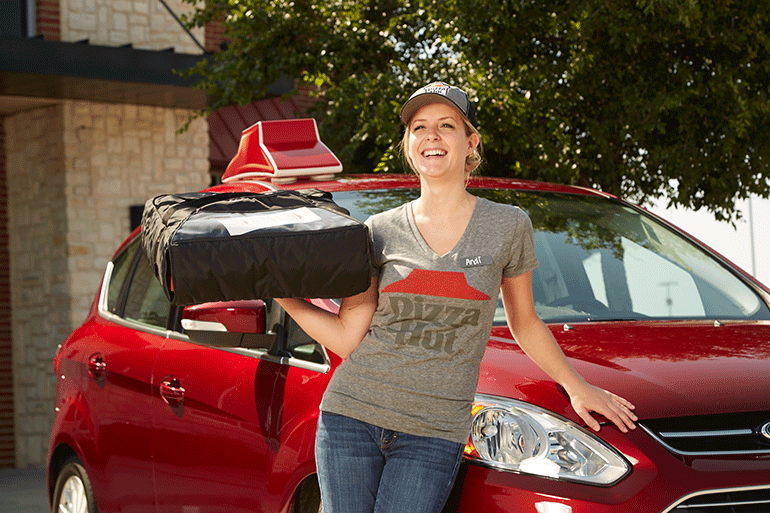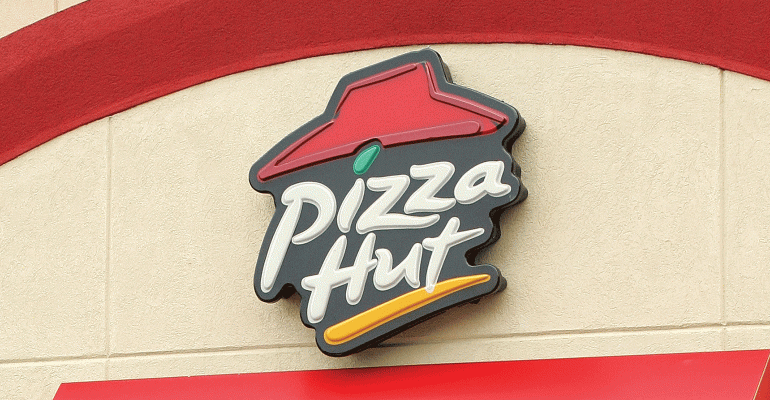Same-store sales continued to grow at both KFC and Taco Bell in the second quarter ended June 30, but sister chain Pizza Hut continued to falter, parent company Yum! Brands Inc. said on Thursday.
Yet executives with the Louisville-based Yum believe the brand is on the verge of getting out of its rut, with a combination of marketing shifts and digital investments expected to yield results in the coming years.
“We’ve taken bold steps that should pay big dividends for Pizza Hut long term,” Yum CEO Greg Creed said on the earnings call Thursday.
KFC’s same-store sales increased 3 percent, including 2 percent in the U.S., the brand’s 12th straight quarter of domestic growth, executives said. Taco Bell reported 4 percent same-store sales growth.
Yet Pizza Hut was “a tale of two businesses,” with same-store sales down 1 percent globally, including a 3-percent decline in the U.S. International emerging markets’ same-store sales grew 2 percent; developed markets outside the U.S. were flat.
The U.S. is a critical market for Pizza Hut, which has more than 16,000 locations worldwide. Nearly half of the company’s system sales come from the U.S.
The results disappointed Wall Street. Yum’s stock, which had been up 21 percent on the year entering trading on Thursday, was down about 2 percent in early trading.
The brand’s domestic struggles come as its two primary rivals, Domino’s Pizza Inc. and Papa John’s International Inc., have both thrived. Domino’s, in particular, has taken business away from Pizza Hut — to the point that Domino’s will likely surpass Pizza Hut as the nation’s largest pizza chain some time this year.
Earlier this year, Yum agreed to invest $130 million in the brand in what the company calls a “Transformation Agreement” aimed at reversing the chain’s faltering fortunes — similar to a $180 million deal between Yum and its KFC U.S. franchisees in 2015 that is widely credited with that chain’s resurgence.
In return for Yum’s investments in marketing and digital technology, franchisees of the brand agreed to follow all national price points through 2019 and to increase their contribution to the ad fund.
Much of the investment is coming on the digital side, where Pizza Hut has fallen behind its rivals in the use of technology. Both Domino’s and Papa John’s get 60 percent or more of their orders from digital, notably mobile ordering, while Pizza Hut is “around 50 percent.”
Those chains also have loyalty programs that have helped them generate repeat business.
Earlier this week, Pizza Hut took a step to match those rivals with the introduction of its own loyalty program.
“In a lot of cases, being last to the party on loyalty is a good thing, because we get to offer the best program and learn from the experiences of others,” CFO David Gibbs said on the call.
Executives said they expect Pizza Hut to convert to a single point-of-sale system by the end of the year, which will help fuel such digital initiatives. “You can expect to see those types of improvements to technology programs coming out,” Gibbs said.
The chain is also testing a fast-casual version of Pizza Hut, and executives said they received 100 submissions from operators who want to participate in an expansion of that test.
Marketing likewise remains important to Pizza Hut’s ability to emerge from its sales slump. Executives noted that the messaging has already changed to emphasize hot and fresh.
“We’re going to make sure our customers get the best product,” Gibbs said, noting that Pizza Hut has doubled down on its delivery capabilities with its vow to hire 14,000 drivers by the end of the year.
Still, don’t expect quick results, executives said. “We do not expect the transformation agreement to yield results [quickly],” Creed said. “We do expect it to yield improvement over the long term.”

Pizza Hut is improving its delivery algorithm to be more efficient, but also hiring 14,000 more drivers to carry out that more efficient delivery.
Yum is big on delivery
Yum Brands already delivers — nearly 20,000 of the company’s nearly 44,000 global units has delivery.
Most of that delivery comes from Pizza Hut, of course, but the company clearly wants more.
Creed said that delivery is a “new location at typically higher check averages. That makes delivery a platform for huge growth.”
Yum is testing delivery in a number of its markets, both through the use of independent aggregators as well as through the employment of its own drivers.
The company’s transformation agreement at Pizza Hut essentially commits that brand to a delivery and takeout model. Taco Bell, meanwhile, has delivery in 1,000 of its 6,686 locations through a partnership with Door Dash
But the chain has considerable hope for delivery at the 20,854-unit KFC. “KFC is ideally set up for delivery, with buckets of chicken,” Creed said. “It’s like [Colonel Sanders] realized one day we’d be delivering this stuff.”
Contact Jonathan Maze at [email protected]
Follow him on Twitter: @jonathanmaze

